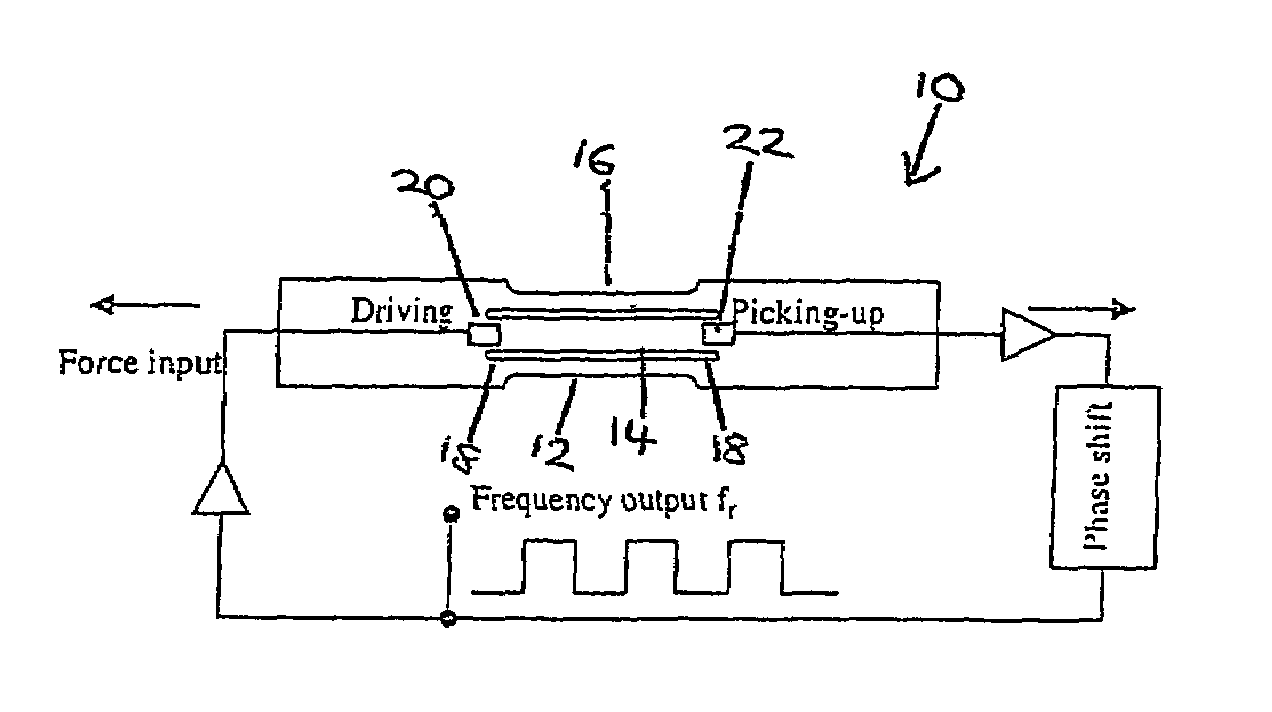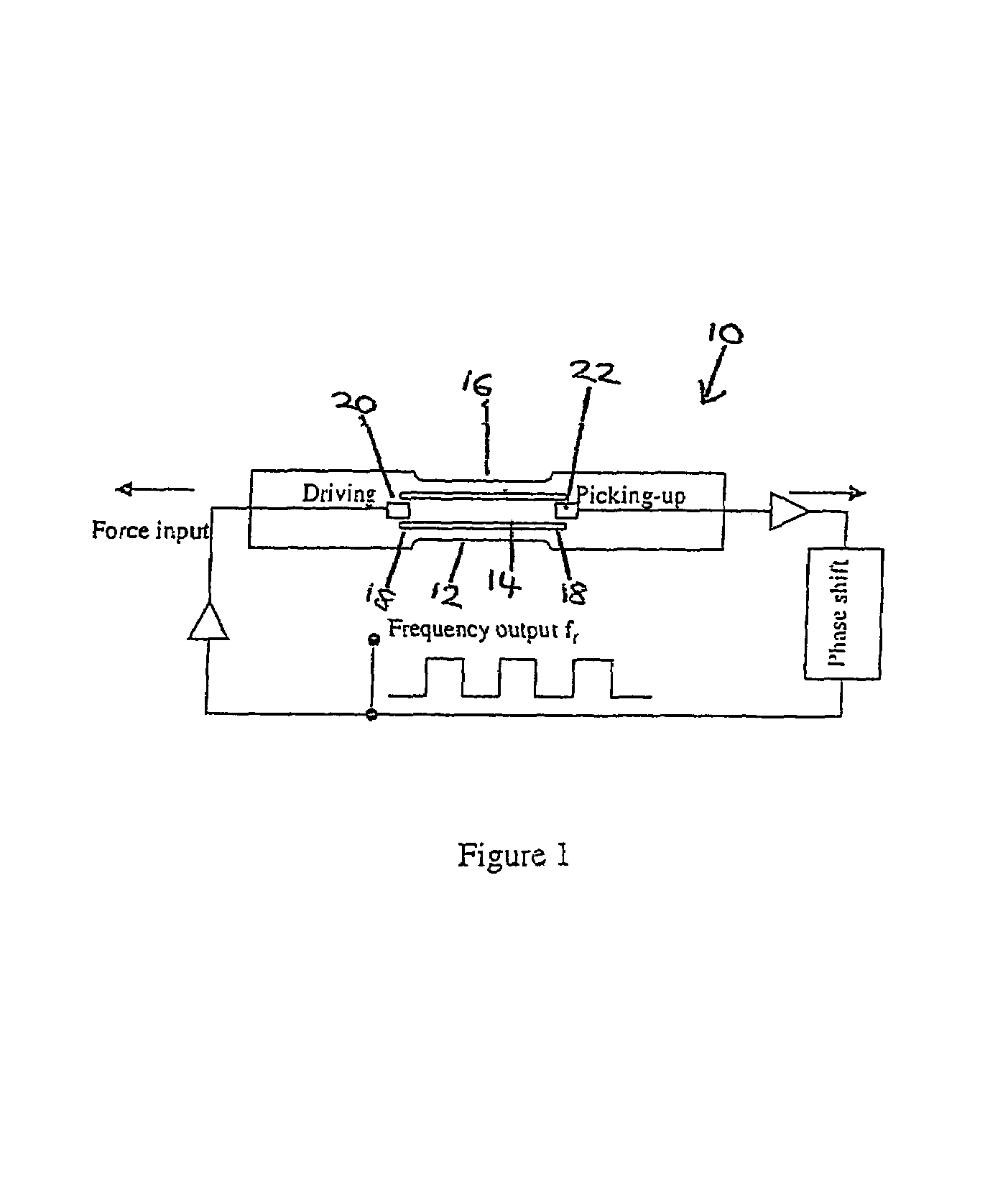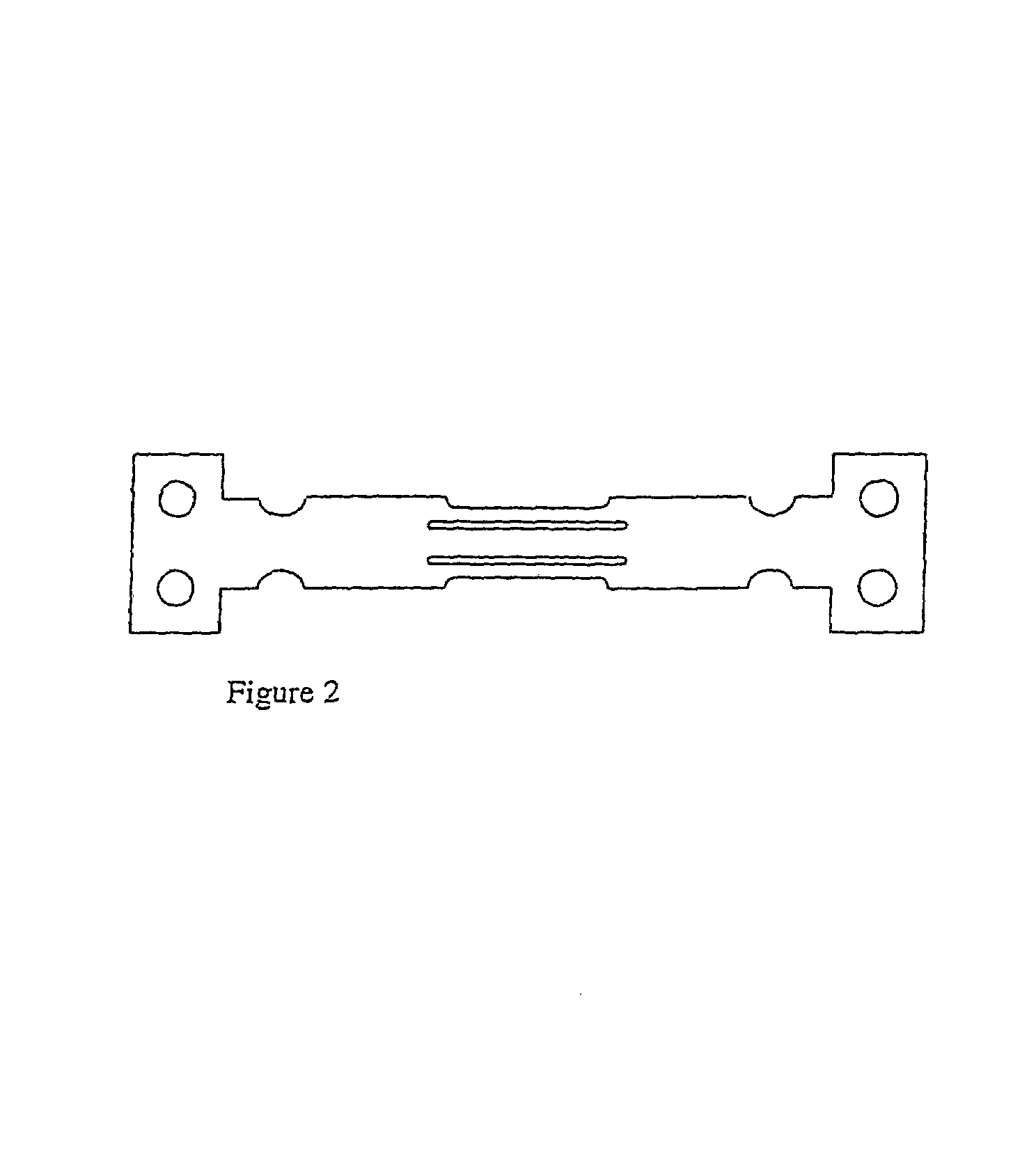Resonant sensor assembly
a technology of resonant sensor and assembly, which is applied in the direction of piezoelectric/electrostrictive device details, piezoelectric/electrostrictive device details, device details, etc., can solve the problems of increasing the natural frequency of the resonator, reducing the production efficiency of the resonant, so as to achieve easy automation and quality factor, accurate manufacturing conditions, and the effect of high degree of quality
- Summary
- Abstract
- Description
- Claims
- Application Information
AI Technical Summary
Benefits of technology
Problems solved by technology
Method used
Image
Examples
Embodiment Construction
[0047]The preferred embodiments described herein provide a metallic, silicon or ceramic triple-beam resonator with thick-film piezoelectric elements to drive and detect the vibrations. In the case of a metallic resonator, the substrate of the preferred embodiment was fabricated by means of a double-sided photo chemical-etching technique and the thick-film piezoelectric elements were deposited by a standard screen printing process. An embodiment of resonator which was built and tested had a length of 15.5 mm, an overall width of 7 mm and had a favoured mode at 7.2 kHz with a Q-factor of 3100. The triple beam resonator could be described has having a tuning fork structure with thick-film piezoelectric drive and pickup elements.
[0048]Referring to FIG. 1, the embodiment of triple beam resonator shown is provided with printed thick-film piezoelectric drives and pickups. Thick piezoelectric films are batch screen printed onto the tines of the resonator at the correct positions to obtain t...
PUM
 Login to View More
Login to View More Abstract
Description
Claims
Application Information
 Login to View More
Login to View More - R&D
- Intellectual Property
- Life Sciences
- Materials
- Tech Scout
- Unparalleled Data Quality
- Higher Quality Content
- 60% Fewer Hallucinations
Browse by: Latest US Patents, China's latest patents, Technical Efficacy Thesaurus, Application Domain, Technology Topic, Popular Technical Reports.
© 2025 PatSnap. All rights reserved.Legal|Privacy policy|Modern Slavery Act Transparency Statement|Sitemap|About US| Contact US: help@patsnap.com



